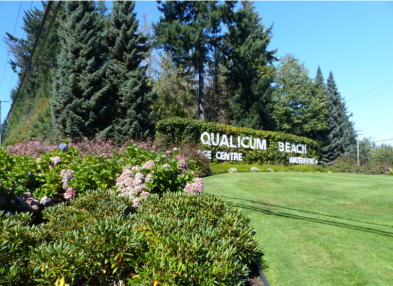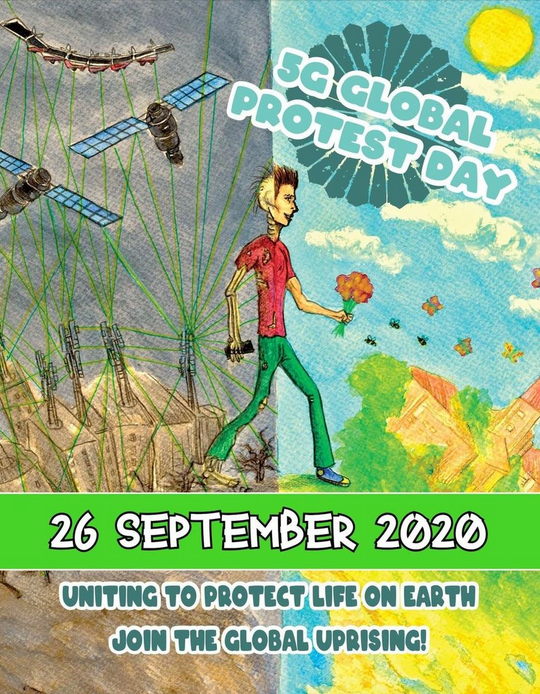The Annual Global Day of Protest against 5G (Fifth Generation cellular networks) is coming up this Saturday, September 26, 2020. Two events are planned for Vancouver Island on the day: one in Victoria, BC, and one in Qualicum Beach, BC.
Victoria, BC: From 1:00-2:00 pm gather at the ISED (formerly Industry Canada) office, 1230 Government St. Bring signs and posters, and remember social distancing and masks. We will picket on the sidewalk outside this office. Make signs that have some info about higher energy use, capturing data for Internet of Things, cybersecurity hazard, as well as health issues. Hopefully, we will be able to share some of our information with people new to the topic. Please spend just an hour of your time to protest publicly against 5G and ISED’s failure to ensure our safety, privacy and environment.
Qualicum Beach, BC: From 12:30-2:30 pm gather at the site of the proposed cell tower on Village Way at Old Island Highway. Open mike at 1:00 pm. We are following Covid-19 protocols. Masks are appreciated, and required if you wish to use the microphone. Meters will be demonstrated, and volunteers will be available to answer questions you may have.
For more information on the Qualicum Beach event: https://stopsmartmetersbc.com/wp-content/uploads/2020/09/5G-Protest-Day-Tower-Protest-Qualicum-Beach-BC-September-26-2020.pdf
Below is the Qualicum Beach rally site – an area that will be lost if the cell tower is installed:
 Here are examples of USEFUL signs to make and bring – signs that address the health issues associated with 5G as well as cybersecurity risks, higher energy consumption. data mining. For a clickable link to get to these signs individually, go here: https://www.5gcrisis.com/signs
Here are examples of USEFUL signs to make and bring – signs that address the health issues associated with 5G as well as cybersecurity risks, higher energy consumption. data mining. For a clickable link to get to these signs individually, go here: https://www.5gcrisis.com/signs
Personal message from website owner, Kim Goldberg: There are MANY legitimate reasons to raise concerns about the roll-out of 5G – the most basic of which is that the Precautionary Principle is not being observed. We do NOT have data confirming that these exposures are safe, and there is a considerable body of evidence suggesting it may not be safe.
Apart from human health and safety risks, there is the impact to wildlife, environment, forests, honeybees, whales–all of which have shown signs of significant damage from wireless radiation.
And then there are the very legitimate cybersecurity concerns (hacking, potential shut-downs of hospitals, governments, entire population centres). As well as the vast data collection on individuals that is occurring already and that will become even more possible and more comprehensive with the advent of 5G cellular networks and the Internet of Things.
My point is that it is not necessary at all to go down the QAnon rabbit hole of endless Youtube videos and conspiracy theories in order to make a legitimate case against the roll-out of 5G. In fact, you are very much hurting the valid case against 5G by floating the right-wing conspiracy theories conjoining 5G to cabals and micro-chipping and pedophiles and Covid-19 and Deep State and what-not. All of that is the carefully crafted pro-Trump QAnon agenda. And many 5G opponents are completely unaware that they are unwitting dupes of that agenda as they go around promoting it. This results in a total loss of credibility for the legitimate science-based opposition to 5G.
The message to keep coming back to, in order to anchor yourself and your activist work is:
Follow the Precautionary Principle where all wireless radiation technology is concerned.




